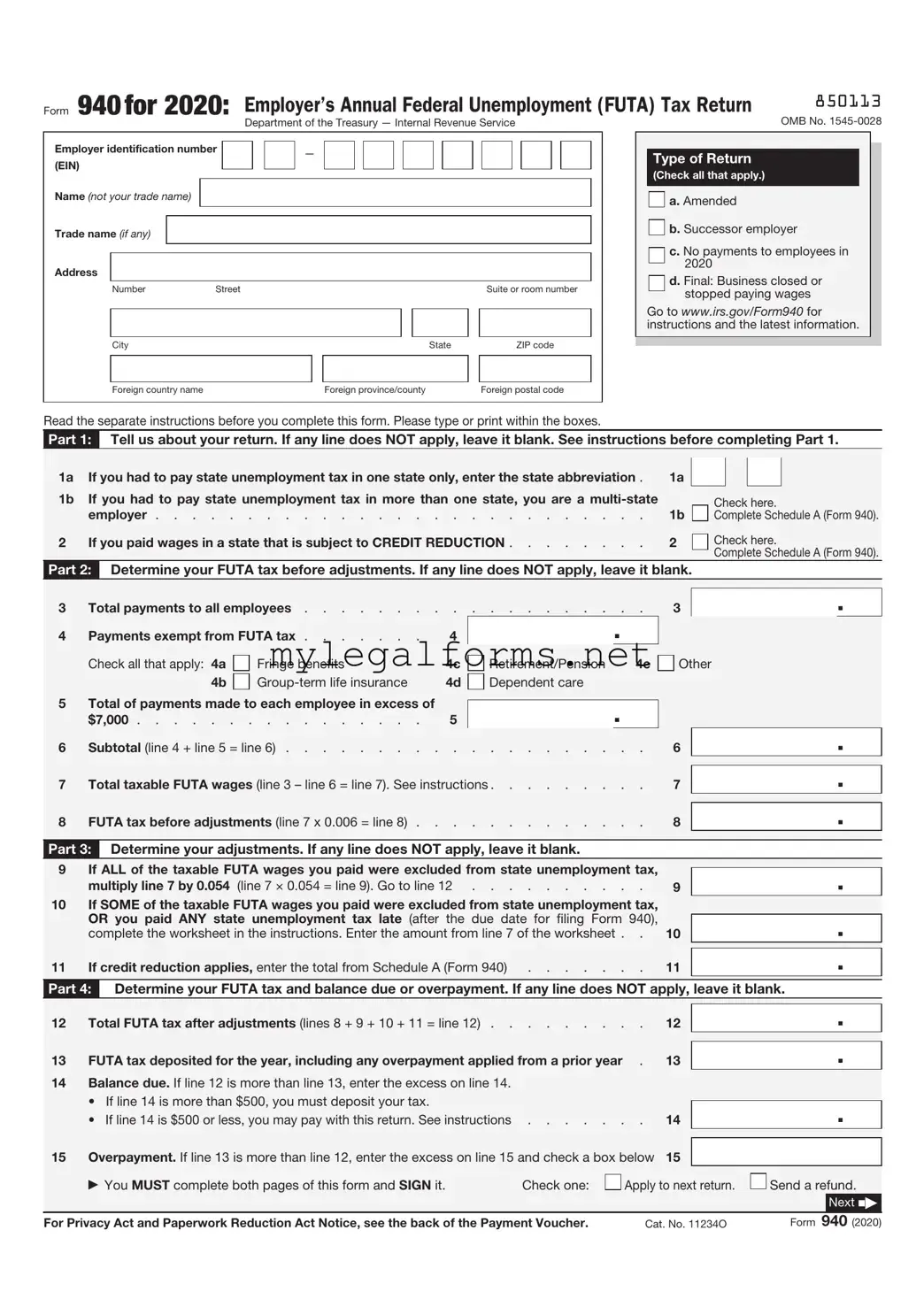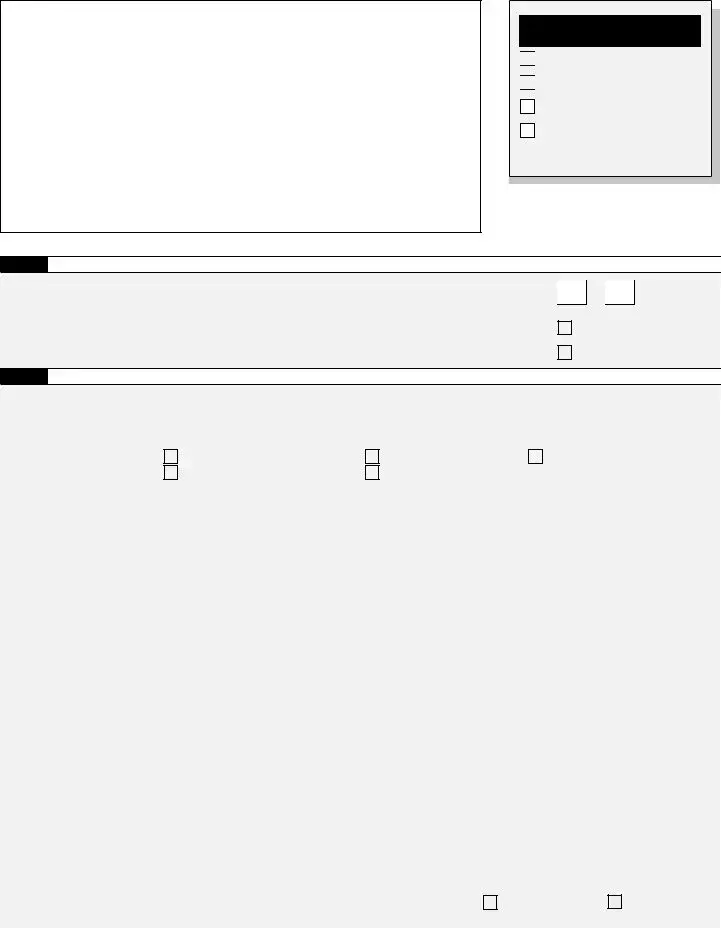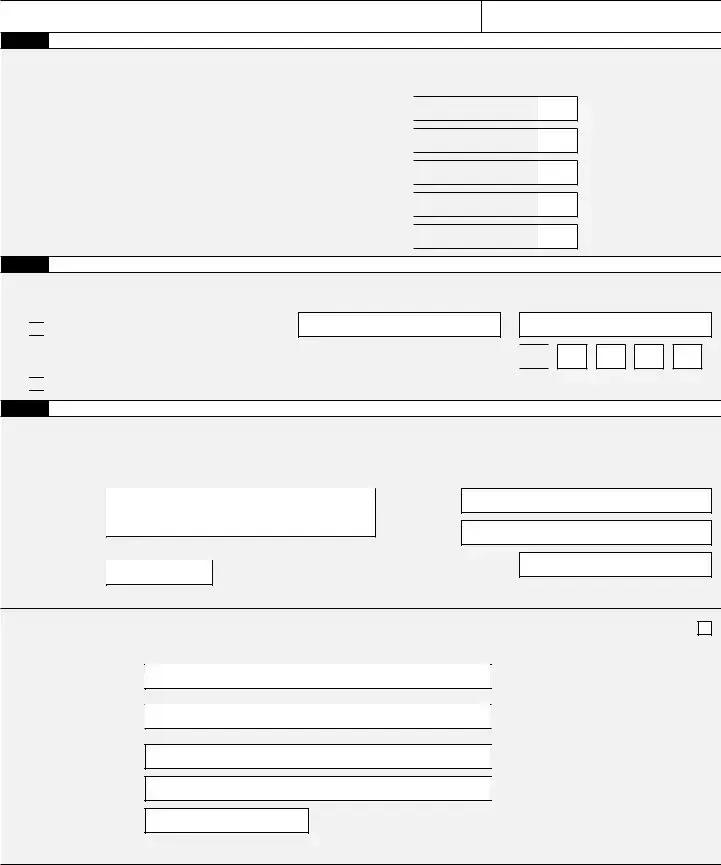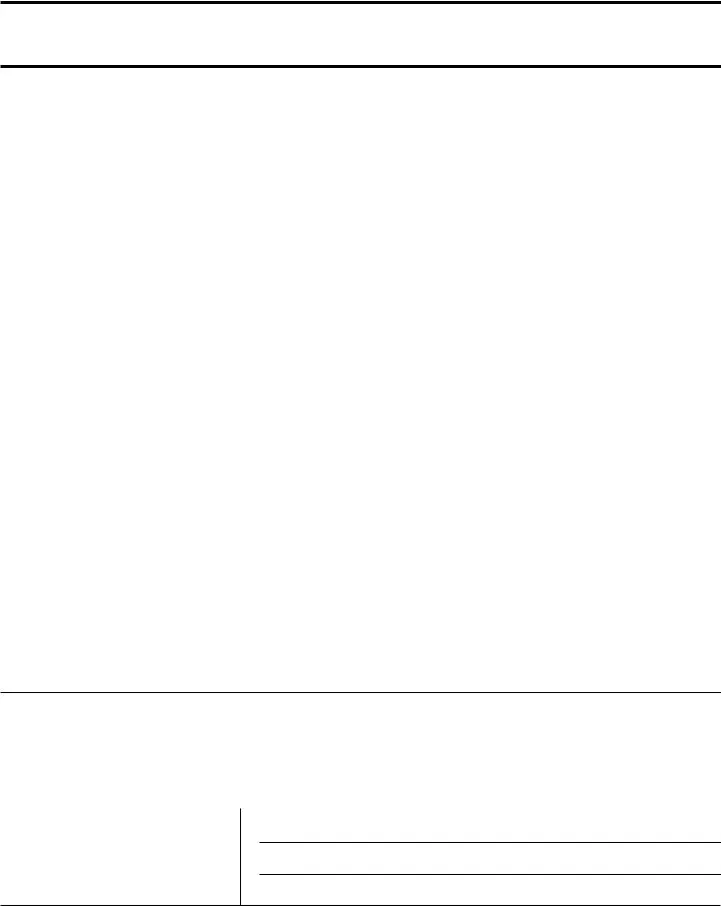When filling out the IRS 940 form, many individuals and businesses encounter common mistakes that can lead to complications. One frequent error is failing to report all wages accurately. This form is used to report annual Federal Unemployment Tax Act (FUTA) taxes, which are based on employee wages. If wages are underreported, it can result in incorrect tax calculations and potential penalties.
Another mistake is neglecting to include all required information. The IRS 940 form requires specific details, including the employer's identification number (EIN), total taxable wages, and the amount of FUTA tax owed. Omitting any of this information can lead to delays in processing or rejection of the form.
Some filers incorrectly calculate their FUTA tax liability. The tax rate is typically 6.0% on the first $7,000 of wages paid to each employee. Miscalculating this amount can lead to either overpayment or underpayment, which may result in interest and penalties.
In addition, many people overlook the importance of checking for mathematical errors. Simple addition or subtraction mistakes can significantly alter the amounts reported on the form. It is advisable to double-check all calculations to ensure accuracy before submission.
Another common issue arises from not signing or dating the form. The IRS requires that the form be signed by the appropriate person, typically the business owner or an authorized representative. Failure to sign can result in the form being considered invalid.
Some individuals also make the mistake of not keeping copies of submitted forms. Retaining copies is essential for record-keeping and can be useful in the event of an audit or if questions arise regarding the submitted information.
Additionally, filing the form late can lead to penalties. The IRS has specific deadlines for submitting the 940 form. Missing these deadlines can result in fines, so it is crucial to be aware of the filing schedule.
Lastly, many filers do not take advantage of electronic filing options. The IRS encourages electronic submission, which can streamline the process and reduce the likelihood of errors. Utilizing online resources can help ensure that the form is completed accurately and submitted on time.







 .
. .
. .
. .
. .
.




 No.
No.
